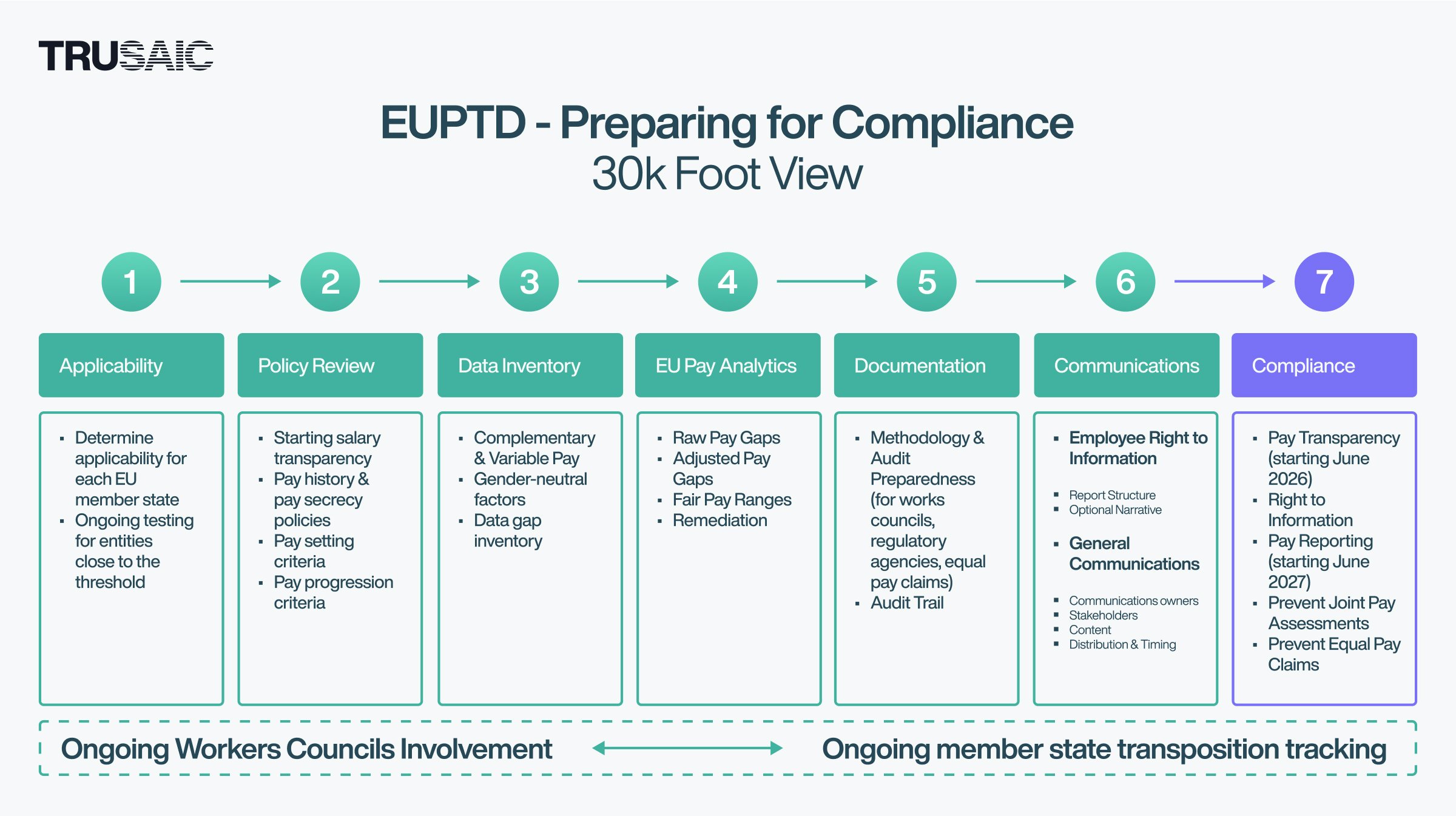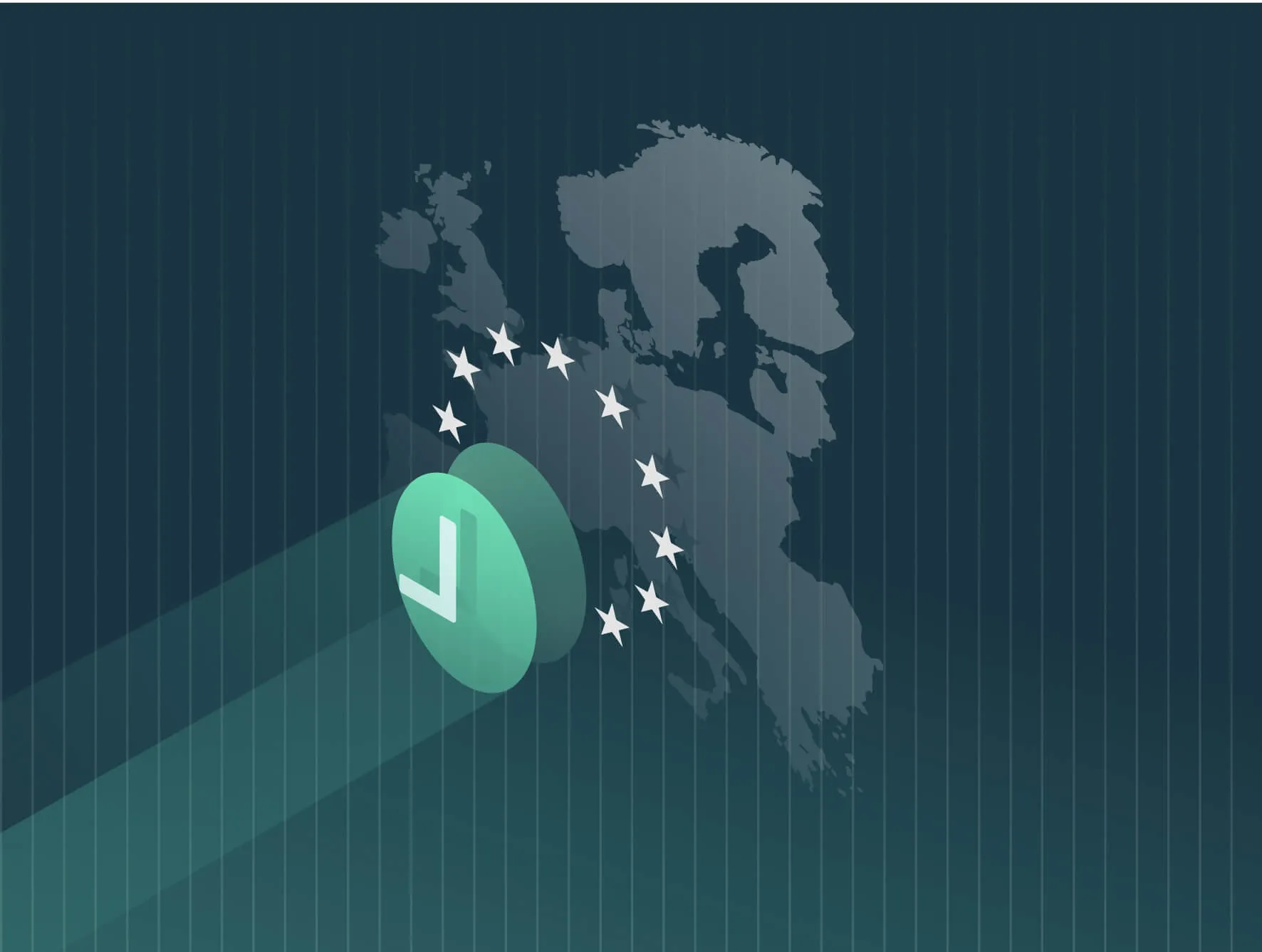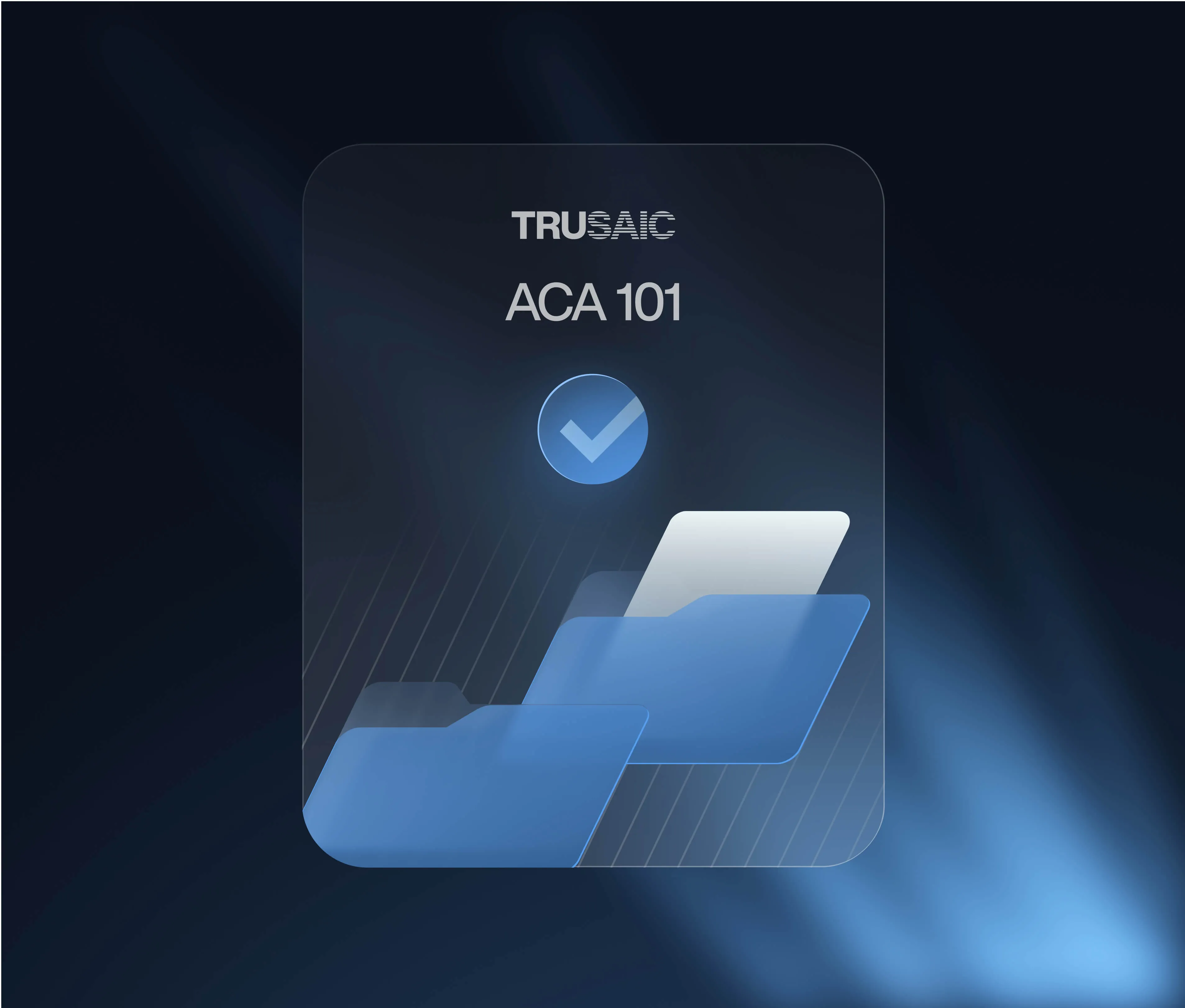The EU Pay Transparency Directive (EUPTD) ushers in a new era of transparency for employers with workers in EU Member States, granting both job applicants and current workers “Right to Information” (RTI) about compensation.
The Directive’s goal here is to help close the gender pay gap by making pay practices more open for discussion.
What the Directive Means for Job Applicants
The Directive requires employers to adopt a fair and transparent recruitment process.
- Gender-Neutral Language: Employers must audit job notices, titles, and descriptions to identify and replace any gendered or exclusionary language with neutral terms. For example, “salesman” should be changed to “sales representative.” This practice helps to create a more inclusive and equitable application process.
- Starting Pay for Job Applicants: Before an interview, employers must provide the initial pay or pay range for the role. This can be included in the job posting or communicated early in the recruitment process, enabling “informed and transparent” pay negotiations.
- Salary History Ban: Employers cannot ask applicants about their current or past salary, which prevents the perpetuation of pay inequalities from previous jobs. Ensure your recruiter/interviewer scripts and online application are updated with this in mind.
What the Directive Means for Workers
The Directive gives current workers significant new rights to access information about their company’s pay practices.
- Access to Pay Criteria: Employers must make the objective, gender-neutral criteria used to determine pay, pay levels, and pay progression easily accessible to all employees.
- Right to Request Information: Workers have the right to request and receive additional information in writing about their employer’s compensation practices. This includes individual “pay level” and average pay levels, by gender, for all jobs of equal value (i.e. within their same worker category).
- The “pay level” must be expressed as both an annual and an hourly rate, including any complementary or variable pay components.
- Annual Notification: Companies must annually inform their employees of this right and the steps for requesting information.
- Ban on Pay Secrecy: The Directive explicitly bans pay secrecy clauses in employment contracts. This gives employees the legal right to discuss their salary with colleagues, fostering greater transparency and collective awareness of pay disparities.
- Burden of Proof: If a company’s pay system lacks transparency, the burden of proof shifts to the employer. The employer must demonstrate that no pay discrimination exists, removing the need for a worker to provide “prima facie” evidence (i.e., evidence on its face) to support a discrimination claim. This makes it easier for workers to raise pay discrimination claims.
How Trusaic Can Help
At Trusaic, we are committed to helping our clients achieve full compliance with the RTI provisions of the EUPTD as soon as possible, ideally before the year’s end.
This proactive approach is crucial, as some Member States are already transposing key aspects of the Directive into national law. For example, Malta has already adopted RTI requirements, mandating employers to comply with the Transparency in Starting Pay provision by Aug. 27, 2025.
Similarly, Poland has partially transposed pay transparency requirements, including the Transparency in Starting Pay, Salary History Ban, and Gender-Neutral Language provisions, with a compliance deadline of Dec. 24, 2025.
To assist with these requirements, we have developed a 7-stage framework to guide you toward comprehensive EUPTD compliance.

This framework includes hands-on exercises designed to help you and your key stakeholders (such as talent acquisition, compensation, HR compliance, HRIS, legal, and communications) navigate practical steps.
Our goal is to ensure successful implementation that not only meets legal requirements but also equips your professionals with valuable insights into your HR processes for the future. Our software enables compliant pay systems, gender-neutral job evaluations, and automates complex reporting obligations to keep you one step ahead of EU pay transparency enforcement.
- PayParity® analyzes your rewards data (compensation/benefits in kind) and quickly identifies inequities to determine if your adjusted gender pay gap is above 5%. It enables you to easily comply with Article 7 (right to information) and Article 6 requirements (pay setting and progression policy).
- Our Remediation Optimization Spend Agent (R.O.S.A.) works as PayParity’s AI remediation partner to find the most cost-effective way to close nominal pay gaps above 5% to ensure compliance.
- Salary Range Finder ensures equitable pay at the point of hire to prevent your pay gap from rising above 5% and enables you to easily comply with the Directive’s salary range disclosure and salary history ban requirements.
- Regulatory Pay Transparency Reporting™ captures your pay equity findings and generates compliant, one-click reports across all EU jurisdictions.
- Our Pay Transparency Agent answers all your pay transparency reporting questions instantly
- Our Communications Agent crafts perfect contextual narratives in any EU language to support your annual pay reports.
Trusaic is GDPR compliant and can assist any organization in any EU state in meeting its obligations under both the EU Corporate Sustainability Reporting Directive and the EU Pay Transparency Directive.
Visit our always updated Member State Transposition Monitor to stay on top of the latest EU Pay Transparency Directive developments.







